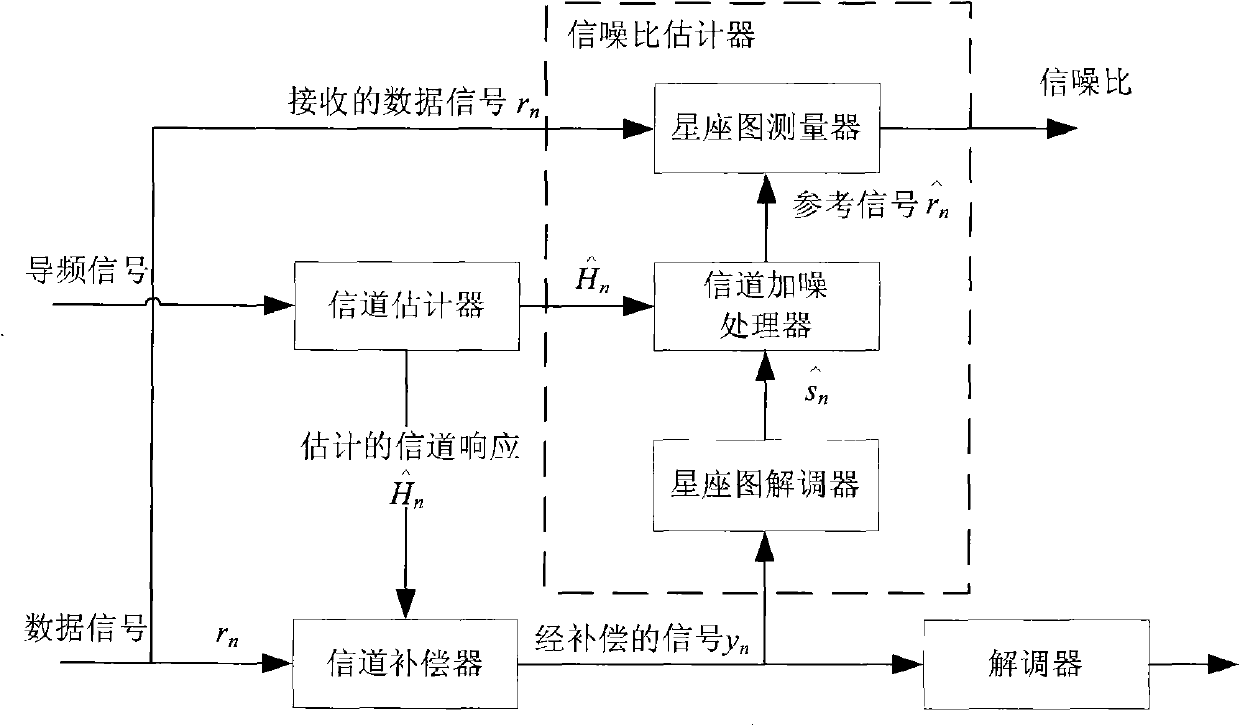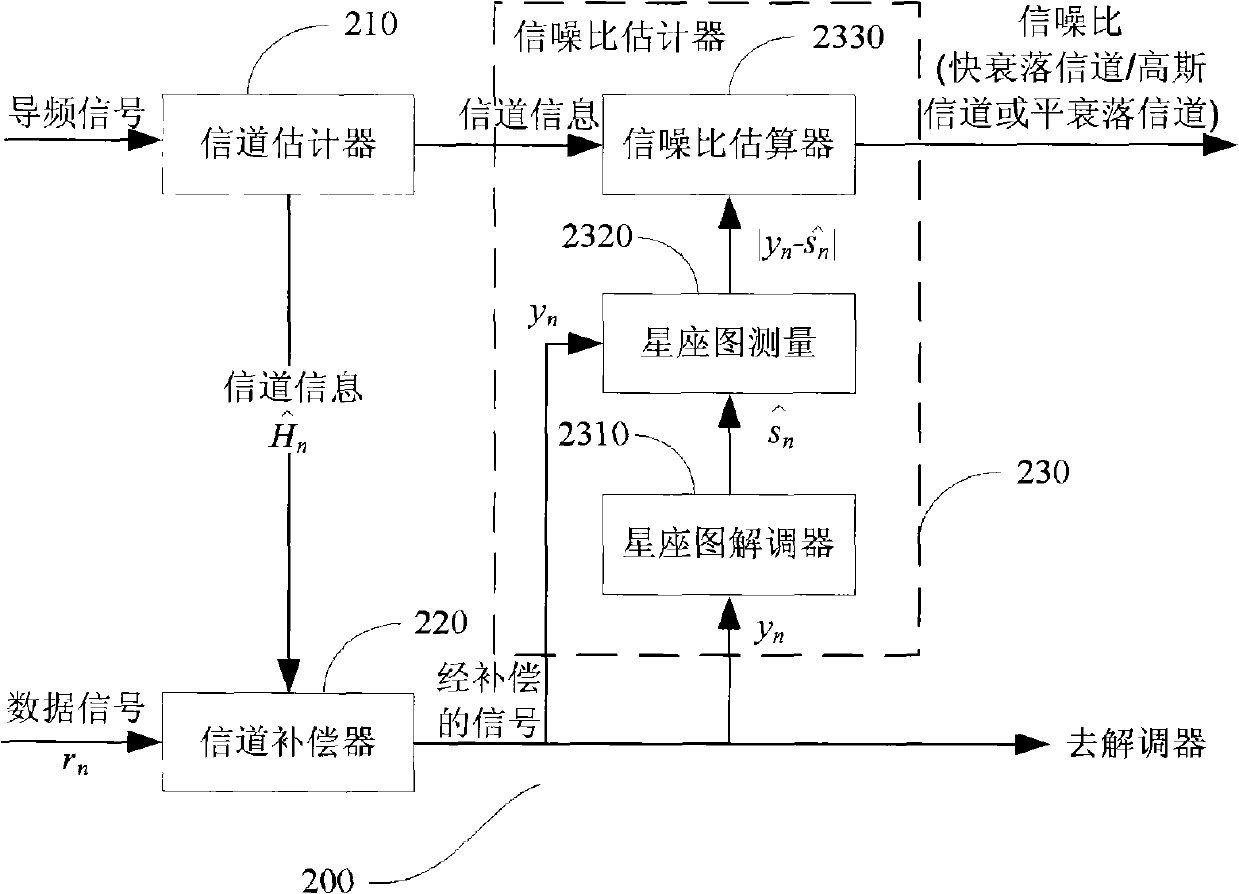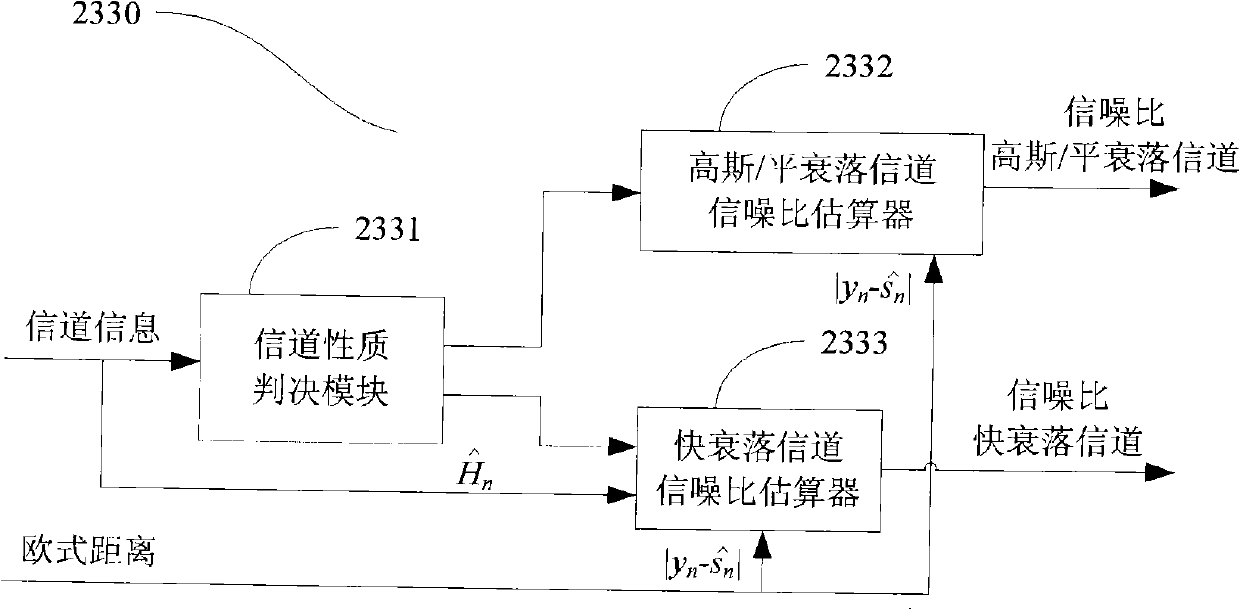Signal-to-noise ratio estimation device, system and method based on star map measurement
A technology of signal-to-noise ratio estimation and constellation diagram, applied in the field of signal-to-noise ratio estimation, can solve the problem of high computational complexity, achieve good estimation performance, reduce computational complexity, and reduce the effect of implementation complexity
- Summary
- Abstract
- Description
- Claims
- Application Information
AI Technical Summary
Problems solved by technology
Method used
Image
Examples
Embodiment Construction
[0048] The present invention improves the signal-to-noise ratio estimator based on constellation diagram measurement, and proposes a relatively simple calculation and realization of the signal-to-noise ratio estimator and method. The signal-to-noise ratio estimator includes a constellation diagram demodulator, A constellation diagram measurer and a signal-to-noise ratio estimator; wherein, the constellation demodulator input is from the channel compensator to compensate the received data signal to obtain a compensated signal y n , and for the y n Perform demodulation to obtain an estimate of the transmitted signal output to the constellation measurer; the input y of the constellation measurer n and Measure and compare its Euclidean distance output to the SNR estimator; the SNR estimator judges that the channel is a Gaussian channel or a flat fading channel according to the channel condition, then according to directly estimate the signal-to-noise ratio; and if it is ju...
PUM
 Login to View More
Login to View More Abstract
Description
Claims
Application Information
 Login to View More
Login to View More - R&D
- Intellectual Property
- Life Sciences
- Materials
- Tech Scout
- Unparalleled Data Quality
- Higher Quality Content
- 60% Fewer Hallucinations
Browse by: Latest US Patents, China's latest patents, Technical Efficacy Thesaurus, Application Domain, Technology Topic, Popular Technical Reports.
© 2025 PatSnap. All rights reserved.Legal|Privacy policy|Modern Slavery Act Transparency Statement|Sitemap|About US| Contact US: help@patsnap.com



